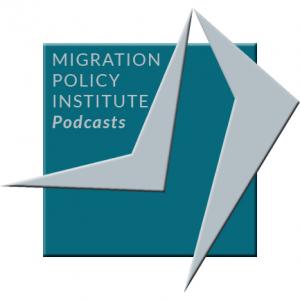Migration Policy Institute Podcasts
2017-05
Episodes

Wednesday May 24, 2017
Wednesday May 24, 2017
The scale of the global refugee crisis has ratcheted up the pressure on governments and their international partners to find sustainable avenues for protection of the displaced. Successive international conferences, including the September 2016 UN summit for refugees and migrants, have highlighted the need for more resettlement places as an integral part of the international response to the crisis. At the EU level, Member State governments are under increasing pressure to open more legal channels to protection as part of a larger effort to reduce the demands on national asylum systems. Yet governments seeking to expand their resettlement program—or engage in resettlement for the first time—face a dearth of solid evidence on what resettlement practices work and why.
This webinar highlights the findings of an MPI Europe report on critical gaps in research and evaluation of resettlement programs, and recommendations for improving evidence gathering and knowledge sharing between resettlement countries. The discussion also includes insights from the Office of the United Nations High Commissioner for Refugees and national resettlement actors on the knowledge and support needs that new and expanding resettlement countries face, and what role international initiatives such as the Emerging Resettlement Countries Joint Support Mechanism (ERCM) and the European Action on Facilitating Resettlement and Refugee Admission through New Knowledge (EU-FRANK) can play in filling these gaps.
This webinar is part of the European Action on Facilitating Resettlement and Refugee Admission through New Knowledge (EU-FRANK) project. The project is funded by the European Asylum, Migration, and Integration Fund (AMIF).

Thursday May 11, 2017
Thursday May 11, 2017
Smartphones have become unlikely symbols of the global refugee crisis: selfies of refugees in harrowing situations abound on social media, people in conflict call for help on Skype or What’s App, and mapping and GPS technology have sometimes acted as a literal lifeline. Seeing an opportunity, numerous tech startups and social entrepreneurs have designed apps and tech tools to protect refugees along their journeys and help them settle in. The last few years have seen hundreds of “civic tech” initiatives emerge in the United States, Europe, the Middle East, and beyond. But dozens of hackathons, hundreds of prototypes, and countless newspaper column inches later—has all this energy and enthusiasm actually made a difference to refugee lives?
In addition to all the energy abounding in the tech sector for a tech-based solution to the current refugee crisis, more traditional stakeholders in the global protection system—such as national governments and NGO actors—have also made a major shift towards integrating technology into their protection strategy. Notably, the United Nations High Commissioner for Refugees (UNHCR) has set a goal of ensuring that “all refugees, and the communities that host them, are connected to mobile networks and the Internet so that they can leverage these technologies to improve their lives."
This MPI webinar explores the recent “tech turn” in refugee protection and integration, and considers whether it is likely to make a lasting impact. Speakers discuss the most promising innovations and their broader implications for policymakers. They discuss the challenges and opportunities for governments, as they seek to work with new actors such as tech companies. And they discuss the broader digital infrastructure needs of refugee camps and services—including the crucial issue of Internet connectivity for refugees.
The reports discussed on this webinar are:
A Global Broadband Plan for Refugees: http://bit.ly/2nwA400
Digital Humanitarianism: How Tech Entrepreneurs Are Supporting Refugee Integration: http://bit.ly/2dMiTlT

Thursday May 04, 2017
Thursday May 04, 2017
In the midst of efforts to further ramp up enforcement at the U.S.-Mexico border even as illegal crossings are a fraction of what they were at their peak in 2000, MPI research sketches the changing realities at the border and offers data that should help inform the policy debate.
This discussion features the release of two MPI publications that provide a comprehensive analysis of U.S. immigration enforcement at the border and the Consequence Delivery System used by U.S. Customs and Border Protection to analyze the effectiveness of its efforts, as well as map the significant changes in Mexican crossing trends and intent to re-enter the United States after deportation.
MPI speakers, along with former U.S. Customs and Border Protection Commissioner Gil Kerlikowske and former Mexican Ambassador Arturo Sarukhan discuss the contemporary border enforcement picture and progress in achieving “operational control” of the Southwest border; the next steps for the U.S.-Mexico border management relationship that has been built over the past two decades; and what policy responses by the United States, Mexico, and Northern Triangle would be most responsive to the changing nature of migrant flows in the region.
As the Trump administration and Congress consider the future of border policy and funding proposals for a border wall, this discussion evaluates the state of the border, the effectiveness of various enforcement strategies, current trends in apprehensions and the flows of migrants, and what the changing realities mean for the migration policies and agendas of the United States, Mexico, and the region.
The related reports are:
- A Revolving Door No More? A Statistical Profile of Mexican Adults Repatriated from the United States
- Advances in U.S.-Mexico Border Enforcement: A Review of the Consequence Delivery System